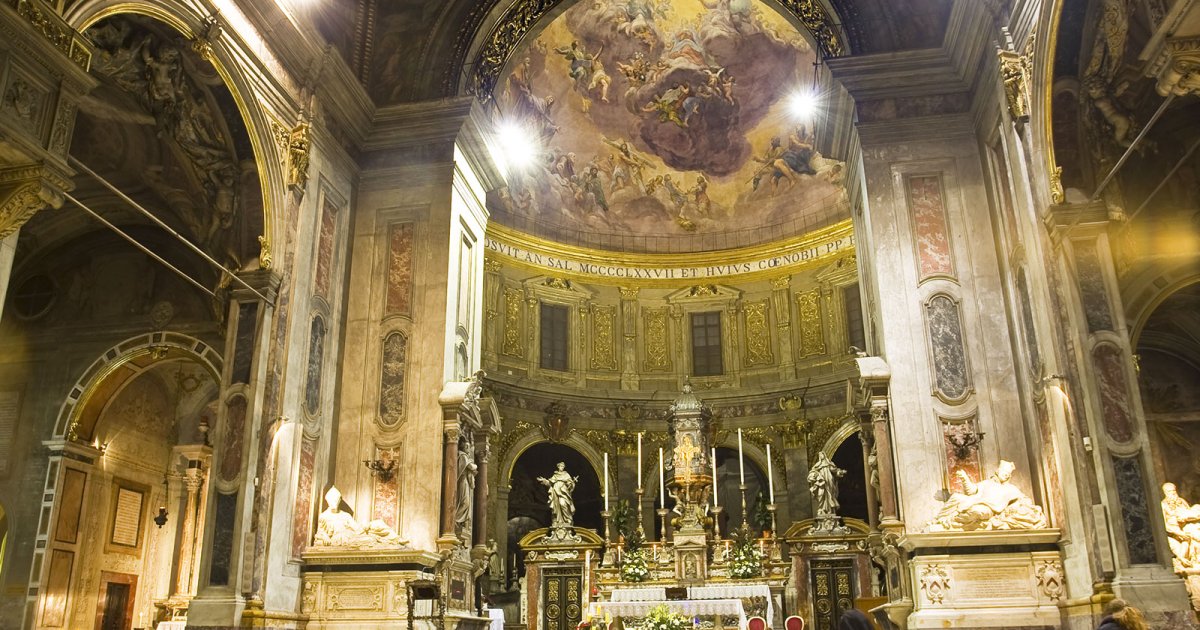PIAZZA ANNUNZIATA, Church - Interior
 Language: English / USA
Language: English / USA
Passing from the bright Chiostrino dei Voti into the Basilica della Santissima Annunziata, it might seem like dusk has come early.
But as soon as you get used to the dimmed light, the church will begin to show off all its unexpected pomp. The Florentine churches rarely seem so lavish, but this is a definite exception. Among stuccoes, marble, and gilding, you can recognize various architectural and decorative phases, though the appearance will seem mostly Baroque. You can also have fun looking at the various ex-voti, gifts, and precious furnishings that have accumulated in the basilica, which perhaps has more devotees than any other church in Florence.
Immediately to the left of the entrance is the fifteenth-century temple that protects the miraculous fresco: even Michelangelo, a notoriously free and critical spirit, believed that a divine intervention should be recognized in the painting!
Among the artwork of the side chapels, don't miss the interesting marble Pietà in the chapel to the right, where the sculptor Baccio Bandinelli has portrayed himself supporting the body of dead Christ.
Along the left, the first two chapels have important paintings by Andrea del Castagno, one of the protagonists of 15th-century Florentine art that you may have already seen in the Cathedral in the magnificent Equestrian monument of Niccolò da Tolentino. In the fourth chapel don't miss the large, beautiful panel of the Assumption of the Virgin by Perugino, which once stood over the basilica's main altar.
From the left side of the church you can walk into the large cloister that was built at the end of the 15th century with its lunettes painted at the beginning of the 17th century, but the most precious work of art here is the Madonna with the Sack, the sixteenth-century painting by Andrea del Sarto that's named after the travelling bag St. Joseph is leaning on.
Lastly, from the second cloister, your basilica visit ends with the Chapel of Saint Luke decorated with sixteenth-century frescoes. It was here that the great Vasari wanted to have the headquarters of the brotherhood of Florence painters. Several great masters have been buried here, including Jacopo Pontormo and Benvenuto Cellini.
FUN FACT: if you happen to be in Florence around March 25th, take advantage of the date to visit the basilica: not only is it the feast of the Annunciation which the basilica is named after, but it's also New Year's Eve in Florence! It was celebrated until 1750 when the city adopted the Gregorian calendar, which set the beginning of the year to January 1.



